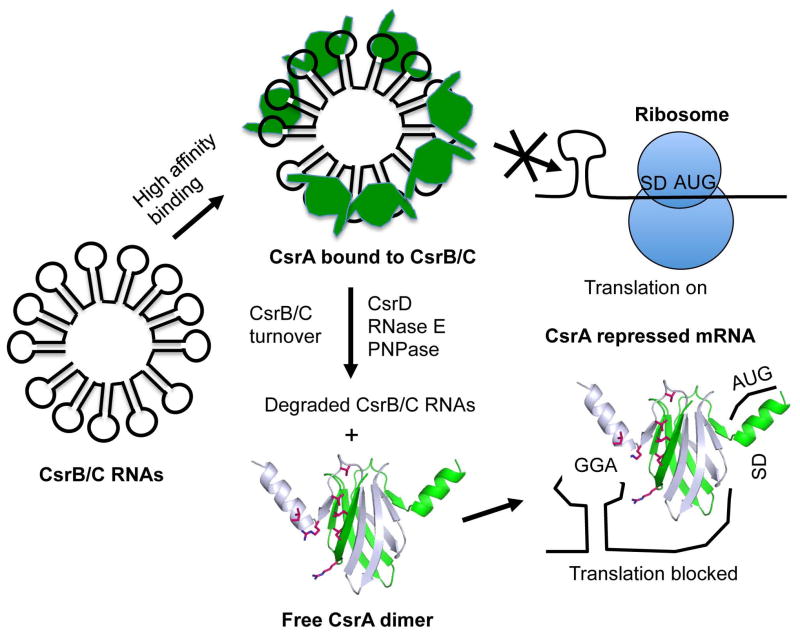Fig. 1.
Outline of the E. coli Csr system. Binding of the CsrA dimer to an mRNA can block translation (shown), destabilize, or stabilize the mRNA. Noncoding RNAs (CsrB and CsrC) containing multiple CsrA binding sites within the loops of predicted stem-loops compete with mRNAs for CsrA binding, thus antagonizing CsrA activity. Free CsrA is regenerated by the turnover of CsrB/C RNAs, which requires RNase E, polynucleotide phosphorylase (PNPase) and CsrD, an atypical GGDEF-EAL domain protein.

